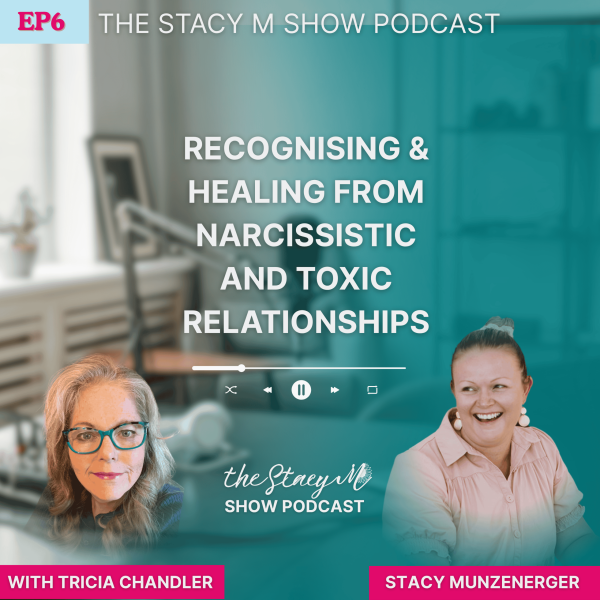Recognising & Healing from Narcissistic and Toxic Relationships

In a recent episode of The StacyM Show, I spoke with my friend and fellow therapist, Tricia Chandler, about one of the toughest but most important topics many of our clients face — toxic and narcissistic relationships.
Whether it’s a romantic partner, a friend, or even a family member, toxic dynamics can leave you questioning your worth, doubting yourself, and feeling stuck. In this blog, we’ll unpack:
The signs of narcissistic or toxic behaviour
Why labels don’t matter as much as how you feel
The steps you can take to begin healing
How to protect yourself from falling into the same cycle again
What Is a Narcissistic or Toxic Relationship?
A lot of people get hung up on whether someone really is a narcissist. The truth? It doesn’t matter if they’ve been clinically diagnosed or not. What matters is how they make you feel.
If you constantly feel drained, belittled, or like your needs don’t matter, you’re likely in a toxic relationship.
Some common traits of narcissistic or toxic individuals include:
- A strong sense of entitlement
- Constant exaggeration and self-importance
- Manipulation, gaslighting, and projection
- Playing the victim to gain sympathy
- Little to no real empathy for others
These behaviours can show up in romantic partners, friends, colleagues, or even family members.
Why Healing Is So Important
Walking away is only step one. As Tricia shared, time alone doesn’t heal these wounds. Without active healing, many people either:
Jump into another relationship too quickly, often repeating the same cycle, or
Wait years and assume they’re fine — only to find themselves drawn to another toxic partner.
Healing requires deep self-reflection, forgiveness of yourself, and often professional support. Tools like Rapid Transformational Therapy (RTT) can help uncover the subconscious “why” behind your attraction to toxic relationships and reprogram those patterns.
How to Begin Healing After a Toxic Relationship
Here are some practical steps that Tricia and I discussed:
Go no-contact. Stop looking for closure from the person who hurt you — it won’t come.
Forgive yourself. Don’t beat yourself up for staying too long. Recognise the courage it took to leave.
Do the inner work. Therapy that addresses subconscious patterns (like RTT or hypnotherapy) is often more effective than surface-level talk therapy.
Set boundaries. Learn what healthy boundaries look like and practice enforcing them.
Get comfortable being alone. When you truly value yourself, you’ll only accept relationships that add to your life.
Avoiding the Same Patterns in Your Next Relationship
It’s natural to fear ending up in the same situation again. The key is working on yourself first. When you’ve done the healing:
You’ll spot red flags sooner.
Toxic people will be less attracted to you (because they know they can’t manipulate you).
You’ll feel stronger in your boundaries and self-worth.
The goal isn’t just to move on — it’s to break the cycle for good.
Final Thoughts
If someone is mistreating you, know this: you’re not alone, and you can heal. Life after a toxic relationship can be full of peace, confidence, and joy — but it takes active work and support.
If you’d like to listen to the full conversation with Tricia, check out the episode of The StacyM Show.
At Aqua Legal & Conveyancing, we often see the impact toxic and narcissistic relationships can have — especially during separations and property matters. That’s why we believe in supporting not just the legal side of your journey, but your emotional recovery too.
If you’re navigating a separation and need both clear legal guidance and compassionate support, get in touch with our team at Aqua Legal & Conveyancing.
